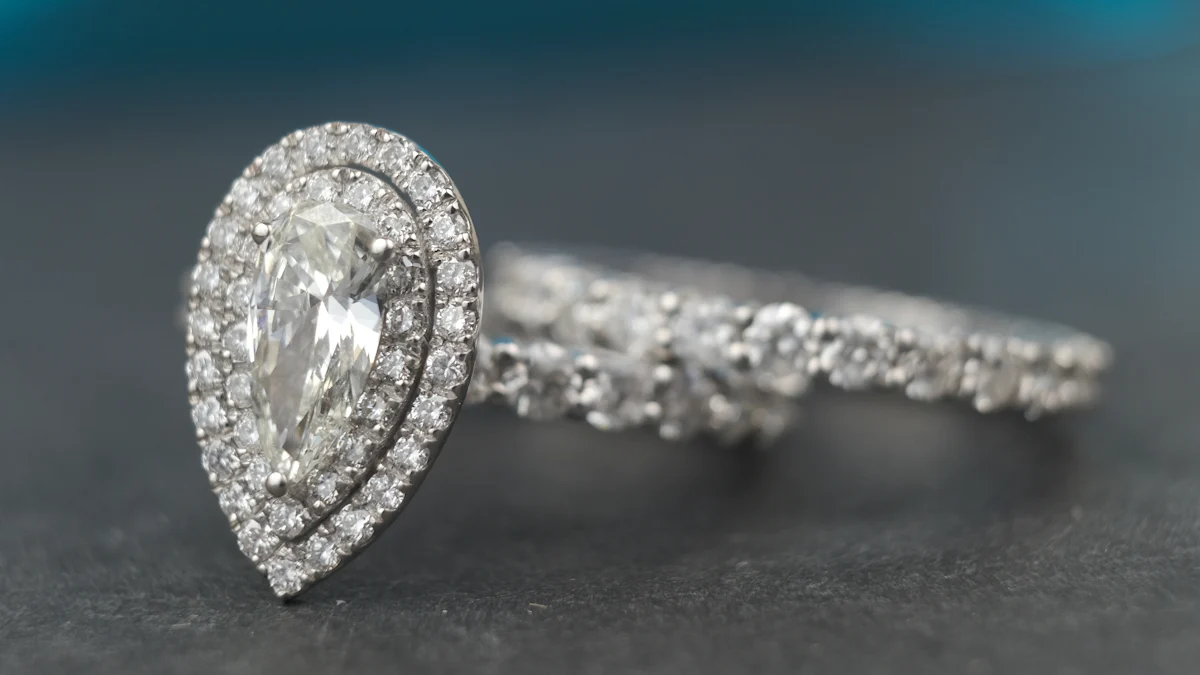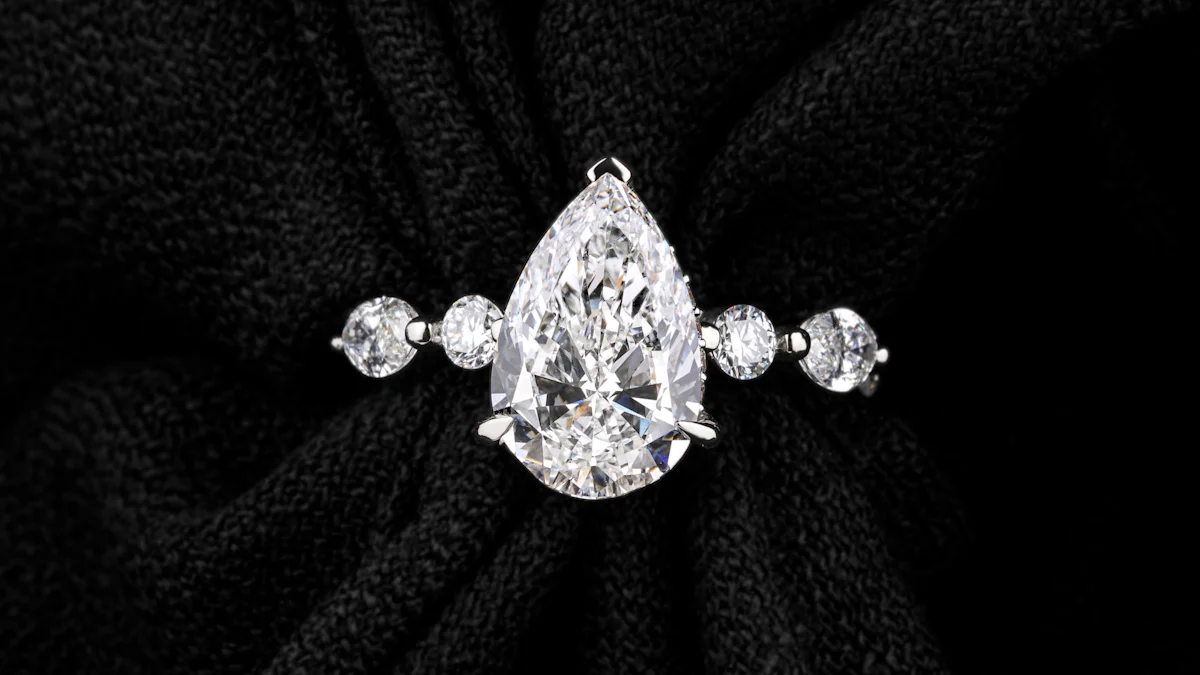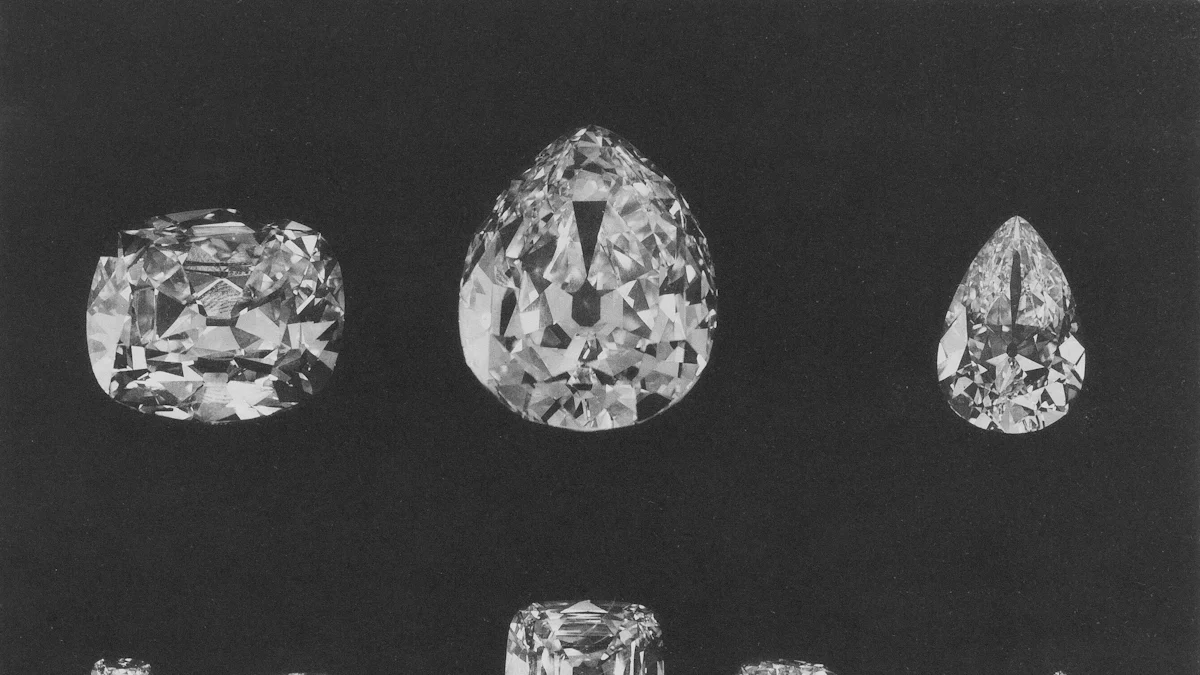Comparing Diamond Size by Carat and Shape

Understanding diamond size by carat and shape is crucial when selecting a diamond engagement ring. These factors significantly influence both the appearance and value of a diamond. For instance, a round diamond, which is the most popular shape, often commands higher prices due to its brilliance. However, fancy shapes like marquise or oval can appear larger at the same carat weight and offer a more cost-effective option. Whether you choose a natural diamond or a lab created diamond, knowing how carat and shape interact helps you make informed decisions. This knowledge ensures your custom ring reflects your personal style and budget.
Understanding Diamond Size by Carat

Definition of Carat
Explanation of carat as a unit of weight.
When you explore the world of diamonds, understanding the term "carat" becomes essential. A carat is a unit of weight used to measure diamonds and other gemstones. One carat equals 200 milligrams. This measurement helps you determine the weight of a diamond, which plays a crucial role in its overall value. However, it's important to note that carat weight doesn't directly translate to the physical dimensions of a diamond.
How carat weight affects diamond size.
Carat weight significantly influences how you perceive the size of a diamond. As the carat weight increases, the diamond generally appears larger. However, the actual size you see can vary based on the diamond's shape and cut. For instance, a one-carat round diamond might look different in size compared to a one-carat oval diamond. The diamond size chart can help you visualize these differences, providing a clearer picture of how carat weight impacts the diamond's appearance.
Carat Weight vs. Perceived Size
Why a higher carat doesn't always mean a larger-looking diamond.
You might assume that a higher carat weight always results in a larger-looking diamond, but this isn't always the case. The perceived size of a diamond depends on more than just its carat weight. Factors like shape, cut, and proportions play a significant role. For example, elongated shapes such as marquise or pear can make a diamond appear larger than a round diamond of the same carat weight. This is because these shapes have more surface area, which enhances their visual size.
Examples of carat weight and perceived size differences.
To illustrate, consider two diamonds, both weighing one carat. A round diamond might appear smaller than a marquise diamond due to its shape. The marquise diamond's elongated form gives it a larger surface area, making it seem bigger to the eye. Similarly, a well-cut diamond with optimal proportions can look larger than a poorly cut diamond of the same carat weight. By consulting a diamond size chart, you can better understand these variations and make informed decisions when selecting a diamond.
The Impact of Diamond Shape
When choosing a diamond, the shape plays a crucial role in its appearance and perceived size. Understanding the nuances of different diamond shapes helps you make informed decisions.
Popular Diamond Shapes
Round
The round cut diamond is the most popular choice for engagement rings. Its 58 facets maximize brilliance and sparkle, making it a timeless option. The round shape often commands higher prices due to its demand and cutting complexity.
Princess
The princess cut diamond offers a modern and elegant look. It features a square shape with pointed corners, providing a unique alternative to the round cut. This shape is versatile and complements various ring settings.
Oval
An oval cut diamond provides a classic yet distinctive appearance. Its elongated shape creates the illusion of a larger size, making it an excellent choice for those seeking a bigger look without increasing carat weight. The oval shape also enhances finger length, adding to its appeal.
Marquise
The marquise shape stands out with its elongated body and pointed ends. This shape maximizes carat weight, giving the impression of a larger diamond. Its unique silhouette makes it a bold and eye-catching choice.
Pear
The pear shape combines the best of both round and marquise cuts. Its teardrop form offers a graceful and elegant look. Like the oval and marquise, the pear shape can make a diamond appear larger due to its elongated design.
How Diamond Shape Affects Perceived Size
Elongated shapes vs. round shapes
Elongated shapes like oval, marquise, and pear often appear larger than round shapes of the same carat weight. These shapes carry more mass toward the top, enhancing their visual size. In contrast, a round cut diamond distributes its mass evenly, which can make it seem smaller.
The role of shape in maximizing perceived size
Choosing the right diamond shape can significantly impact how large the diamond appears. Elongated shapes, such as the oval cut diamond, create an illusion of size by extending the diamond's surface area. This effect makes them some of the best diamond shapes for maximizing perceived size. Understanding these diamond shape comparisons helps you select a diamond that aligns with your preferences and budget.
Diamond Sizes Compared: Carat Weight and Shape Interaction

Balancing Carat and Shape for Appearance
Choosing the right diamond shape can enhance the carat weight of your diamond engagement ring. Different diamond shapes interact with carat weight in unique ways, affecting how large the diamond appears. For instance, elongated shapes like marquise and oval can make a diamond look larger than its actual carat weight suggests. This is because these shapes have more surface area on the top, which maximizes their visual size.
When selecting a diamond, consider how the shape complements the carat weight. A well-cut 0.90 carat diamond can appear more brilliant and substantial than a poorly cut 1.00 carat diamond. This highlights the importance of cut quality in addition to carat weight.
Examples of Shape and Carat Combinations:
- A 1-carat marquise cut diamond may appear larger than a 1-carat round diamond due to its elongated shape.
- A princess cut diamond at 1.6 carats can offer a modern look, while an oval cut diamond at 1.5 carats provides a classic appearance with a larger perceived size.
- A 0.97-carat round brilliant cut diamond can be more cost-effective than a 1.01-carat round brilliant cut, with minimal difference in appearance.
Influence on Value
The interaction between carat and diamond shape significantly impacts the price of a diamond engagement ring. Round brilliant cuts are often the most expensive due to their popularity and cutting complexity. However, fancy shapes like marquise and oval can offer a more budget-friendly option while still appearing large.
How Carat and Shape Affect Diamond Pricing:
- The price difference between a 1.00 ct diamond and a 0.50 ct diamond is not linear but exponential. Larger diamonds command higher prices due to their rarity.
- A diamond of double the weight can be significantly more expensive, especially if it has superior cut, color, and clarity.
Market Trends in Shape and Carat Preferences:
- Round diamonds remain the most sought-after shape, but fancy shapes are gaining popularity for their unique appearance and cost-effectiveness.
- Consumers increasingly value the balance between carat weight and diamond shape to maximize both appearance and budget.
Understanding how diamond size by carat and shape interact helps you make informed decisions when selecting a diamond engagement ring. By considering both factors, you can choose a diamond that aligns with your personal style and financial considerations.
Understanding both carat and shape is essential when selecting a diamond engagement ring. These factors significantly influence the appearance and value of your diamond. A natural diamond or a lab created diamond can both offer beauty, but their perceived size and cost vary based on these attributes. To find the perfect diamond size, consider your personal style and preferences.
- Evaluate Carat and Shape: Choose a shape that complements the carat weight to enhance the diamond's visual appeal.
- Consider Natural vs. Lab: Decide between a natural diamond and a lab created diamond based on your values and budget.
- Customize Your Choice: Opt for a custom ring that reflects your unique taste and engagement story.
By considering these aspects, you ensure your diamond engagement ring aligns with your desires and budget.
FAQ
What is the significance of carat weight in diamonds?
Carat weight measures a diamond's weight, not its size. A higher carat weight often means a larger diamond, but shape and cut can affect how big it looks. Understanding carat weight helps you choose a diamond that fits your style and budget.
How does diamond shape influence its appearance?
Diamond shape affects how light reflects and how large the diamond appears. For example, elongated shapes like oval or marquise can make a diamond look bigger. Choosing the right shape enhances the diamond's visual appeal.
Why do round diamonds cost more than other shapes?
Round diamonds are popular due to their brilliance and sparkle. They require more precision in cutting, which increases their cost. Other shapes, like princess or pear, can offer a unique look at a lower price.
Can a smaller carat diamond appear larger?
Yes, a smaller carat diamond can look larger with the right shape and setting. Elongated shapes and certain settings maximize the diamond's surface area, enhancing its perceived size.
How do I choose between a natural and a lab-created diamond?
Consider your values and budget. Natural diamonds are traditional, while lab-created diamonds offer a more affordable and environmentally friendly option. Both can be beautiful and valuable.
What role does setting play in a diamond's appearance?
The setting holds the diamond in place and affects its look. A well-chosen setting can enhance the diamond's size and brilliance. Evaluate the setting to ensure it complements the diamond's shape and carat weight.
Are fancy-shaped diamonds more cost-effective?
Fancy-shaped diamonds, like marquise or oval, often cost less than round diamonds of the same quality. They offer a unique appearance and can appear larger, providing value for your investment.
How do I evaluate the visual size of a diamond?
Consider the diamond's shape, cut, and setting. These factors determine how large the diamond looks on jewelry. Evaluating visual size ensures the diamond meets your expectations.
What should I prioritize when selecting a diamond?
Focus on carat weight, shape, and setting. These elements influence the diamond's appearance and value. Choose a combination that aligns with your personal style and financial considerations.
How can I ensure my diamond reflects my personal style?
Customize your choice by selecting a shape and setting that resonate with you. Consider both natural and lab-created options. This approach ensures your diamond engagement ring tells your unique story.
See Also
A Guide to Engagement Ring Diamond Cuts
Essential Elements Influencing Diamond Ring Prices
The Size Comparison of a 2.25 Carat Diamond

